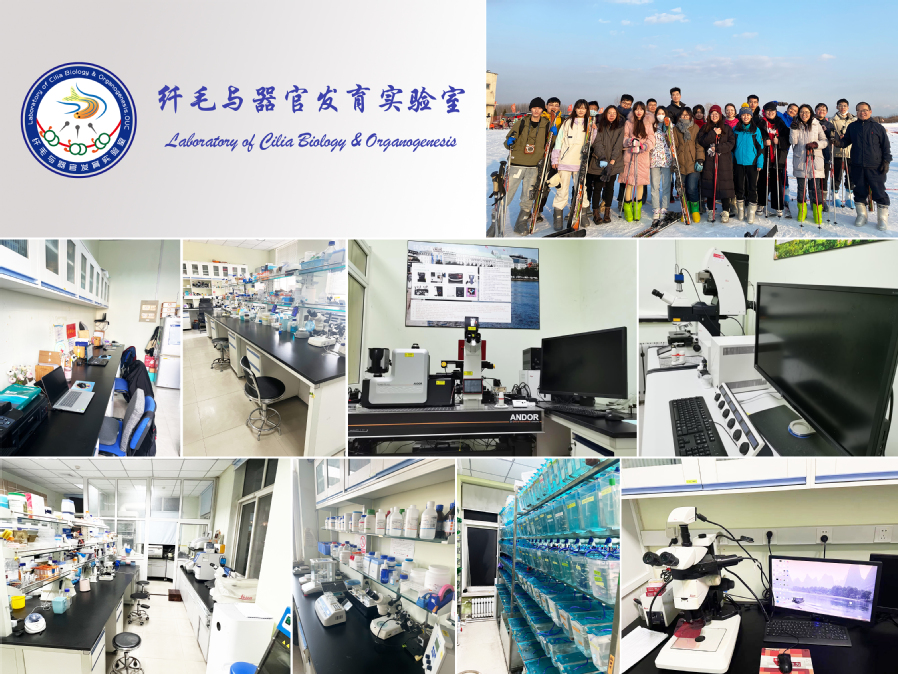
纤毛普遍存在于高等动物细胞内,在胚胎发育过程中发挥重要生物学功能。纤毛发育异常可引起眼睛、肾脏等多个器官的病变,是导致多种人类遗传疾病形成的重要原因。本课题组致力于研究纤毛发育的分子基础,以斑马鱼、丝盘虫以及纤毛虫等为模式动物,结合分子生物学,遗传学及生物化学等多种手段解析纤毛发育的分子机制,通过构建多种疾病的动物模型研究其致病机理,为最终纤毛疾病的治疗打下基础。课题组的主要研究方向包括:1)体轴发育的调控机制;2)感光细胞的发育及凋亡机理;3)纤毛病基因的致病机制;4)纤毛的发生与进化机制。课题组目前跟国内外多个高校及医院建立了密切合作关系,在纤毛病发病机制的研究方面取得了重要进展,研究成果先后发表在Nature Genetics, PNAS, EMBO Journal, PLOS Genetics等国际前沿刊物上。
Cilia exist in many phyla from protozoa to mammalian cells and play diverse biological functions. Disruption in cilia function has been linked to many human genetic disorders, collectively termed as ciliopathies. Our lab is interested in the study of mechanisms underlying ciliogenesis using multiple organisms, including zebrafish, placozoa and ciliates. Currently, the main focus of our lab include: 1) The mechanisms of body axis development regulated by cilia-driven cerebrospinal fluid; 2) Degeneration and renewal of photoreceptor cells; 3) Role of cilia and ciliary genes in ciliopathies; 4) Functional evolution of cilia. Our recent findings have been published in several high impact journals including Nature Genetics, PNAS, EMBO Journal and PLOS Genetics.